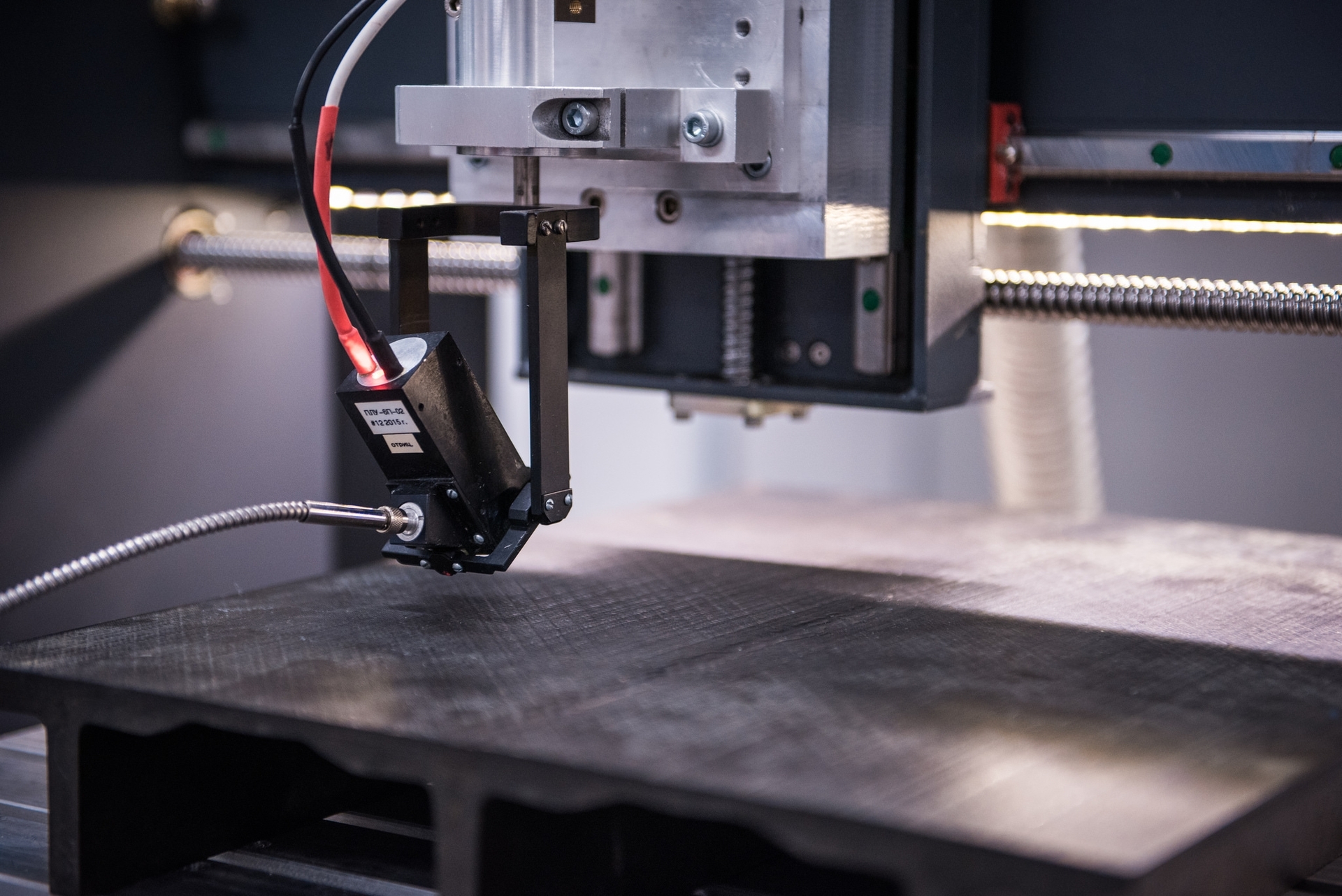Scientists of NITU "MISIS" have found a way to detect defects in aircraft parts of 50 microns
A group of scientists of NITU "MISIS" under the leadership of Professor Alexander Karabutov has developed a unique domestic device for laser-ultrasound diagnostics of materials that can detect the smallest internal defects with an accuracy of one hundredth of a millimeter. The application of the development in the production and operation of aircraft will raise to a new level its quality characteristics and reliability.

The development of technology is associated with the growth of mechanical and thermal loads on the most critical structural elements of the structure and requires the use of new strategic materials, such as composites and additive coatings. These materials are unique in strength and lightness, but structurally heterogeneous, so the development of critical destruction in them occurs more rapidly than in traditional metals.
The smallest pores and defects in the details of aviation mechanisms when exposed to a combination of alternating voltages in the air can turn into a mainline - that is, comparable in size to the functional parts of the aircraft - a crack, and cause a catastrophe. To prevent damage, the most significant liner nodes must undergo a three-dimensional examination of the internal structure, which will detect defective foci at the earliest stage.

According to the project manager, Professor Alexander Karabutov ,
An experimental prototype of a developed automated non-destructive testing system was successfully tested to control carbon-fiber caissons of the wing of a new Russian short-medium-range passenger liner, including during load tests.
The first batch of innovative laser-ultrasonic flaw detectors has already been launched into small-scale production and is planned for use in the domestic aerospace industry.
Professor Alexander Karabutov - head of the laboratory "Laser-ultrasound diagnostics of the structure and properties of rocks and heterogeneous structural materials" NITU "MISiS", winner of an open international competition for grants NITU "MISiS". Research interests: powerful acoustic beams, self-action of discontinuous waves, self-focusing of ultrasonic beams, laser optoacoustics, laser-ultrasound spectroscopy and tomography.
The development of technology is associated with the growth of mechanical and thermal loads on the most critical structural elements of the structure and requires the use of new strategic materials, such as composites and additive coatings. These materials are unique in strength and lightness, but structurally heterogeneous, so the development of critical destruction in them occurs more rapidly than in traditional metals.
The smallest pores and defects in the details of aviation mechanisms when exposed to a combination of alternating voltages in the air can turn into a mainline - that is, comparable in size to the functional parts of the aircraft - a crack, and cause a catastrophe. To prevent damage, the most significant liner nodes must undergo a three-dimensional examination of the internal structure, which will detect defective foci at the earliest stage.
"The research team of the new laboratory of NITU" MISiS ", created in 2015 as part of the program to improve competitiveness, under the guidance of Doctor of Physical and Mathematical Sciences, Professor Alexander Karabutov, presented a new, unparalleled, technology of laser-ultrasound structure scoping with unique capabilities for 3D control of materials, parts and products of aviation equipment ", - said the rector of NITU" MISiS "Alevtina Chernikova.The laser-ultrasound structuroscope, developed at NITU "MISiS", has an increased spatial resolution (50 microns) while maintaining a large probing depth (up to 40 mm) and allows characterizing defects by their mechanical characteristics and shape, thereby obtaining a 3D model of the part.
According to the project manager, Professor Alexander Karabutov ,
“Unlike traditional ultrasound, in a laser-ultrasound struktroskopii to create a probe pulse used by the laser, and for the registration of echo signals - ultra-wideband piezo receivers. This allows you to increase the spatial resolution of the ultrasonic control by 6-10 times, as well as its sensitivity, to obtain quantitative information about the state of the material — elastic moduli, porosity, stressed states, and to distinguish between hard and soft inhomogeneities. Measurements can be automated, which increases the reliability of control. "The ultrasonic beam generated by a laser pulse has a number of unique characteristics that are almost impossible to implement with traditional means - “ultrashort” pulses, maintaining a clear waveform, a narrow ultrasonic beam without side hindrances. This allows parts to be inspected under conditions where other methods are ineffective, for example, to detect and distinguish stratification between each successive layer of composite material.
An experimental prototype of a developed automated non-destructive testing system was successfully tested to control carbon-fiber caissons of the wing of a new Russian short-medium-range passenger liner, including during load tests.
The first batch of innovative laser-ultrasonic flaw detectors has already been launched into small-scale production and is planned for use in the domestic aerospace industry.
Professor Alexander Karabutov - head of the laboratory "Laser-ultrasound diagnostics of the structure and properties of rocks and heterogeneous structural materials" NITU "MISiS", winner of an open international competition for grants NITU "MISiS". Research interests: powerful acoustic beams, self-action of discontinuous waves, self-focusing of ultrasonic beams, laser optoacoustics, laser-ultrasound spectroscopy and tomography.
